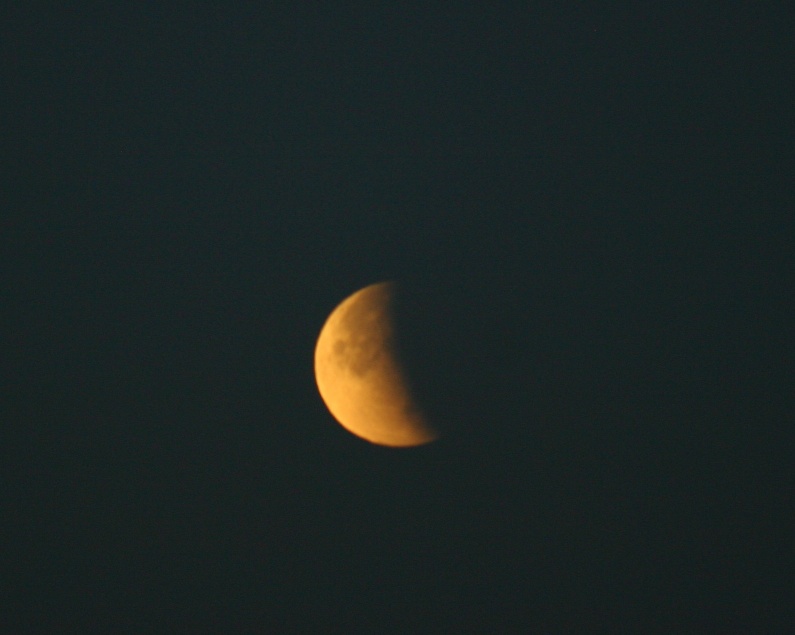
A partial lunar eclipse was visible from the western United States on June 26, 2010. A lunar eclipse can only occur at full moon, when the Moon is on the opposition side of Earth from the Sun. The moon's orbit is inclined 5 degrees with respect to earth's orbit, and as a result we do not have a lunar eclipse every full moon. If the moon's orbit takes it through earth's shadow as it passes around the opposite side of the earth from the Sun, the earth interrupts light shining on the moon and there will be an eclipse. A partial lunar eclipse occurs when the Moon skirts earth's shadow and only part of the Moon dips into earth's umbra. At maximum eclipse on June 26, the Moon was half covered by earth's umbra shadow. In Arizona, maximum eclipse occurred just before sunrise. The Moon set while it was still partially eclipsed. Observers in the Pacific were able to see the entire eclipse from beginning to end. This was the first lunar eclipse in 2010.
In ancient times, people thought the Earth was flat. However, all they needed to do to see that it was not flat was to notice that the Earth casts a round shadow on the Moon during a lunar eclipse. The Greeks correctly concluded that the Earth was round by observing lunar eclipses. In about 240 BC, the Greek mathematician and astronomer Eratosthenes noticed that at noon on the summer solstice, in Syene the sun was directly overhead and would shine down into the bottom of a deep well. A vertical pole cast no shadow at that moment in Syene. However, at local noon on the same date in Alexandria, a vertical pole would cast a shadow. Eratosthenes concluded that the Earth must be round, because if the Earth was flat the shadows cast by a vertical pole would be the same at both locations. Knowing the distance between Syene and Alexandria, and measuring the length of the shadow cast in Alexandria, Eratosthenes was able to calculate the size of the Earth to an impressive degree of accuracy, limited only by the error in the available methods for determining the distance between the two cities. Unfortunately, his publication detailing and explaining his method was lost. Today, our knowledge of his work is based indirectly on accounts gleened from ancient wrtitings of other authors. It is remarkable that the common belief that the Earth was flat persisted for so long even until the time of Columbus.
This image was taken with a Canon EOS Digital Rebel SLR camera with a 300mm lens. The image was published on the Spaceweather.com website, and on MSNBC.
Partial Lunar Eclipse
June 26, 2010
Photo by Sid Leach
Scottsdale, Arizona
Recent Images.
Complete list of images.
Description of equipment used to acquire images.
Home
Feedback and comments should go to Sid